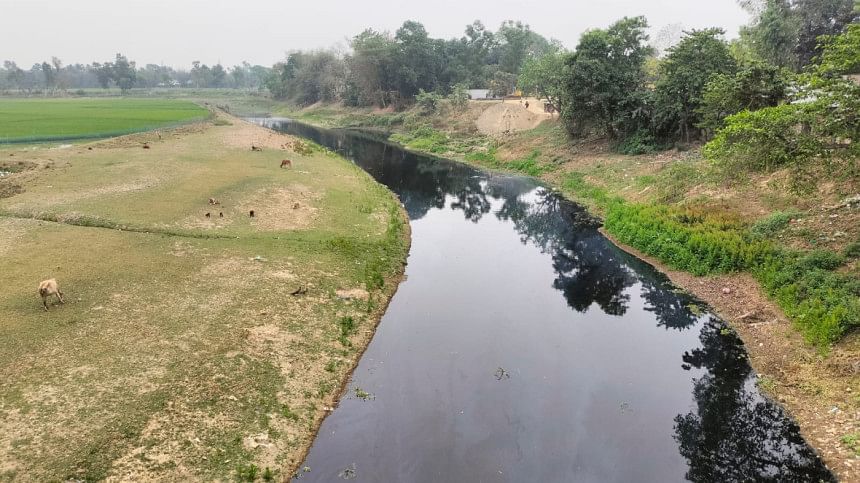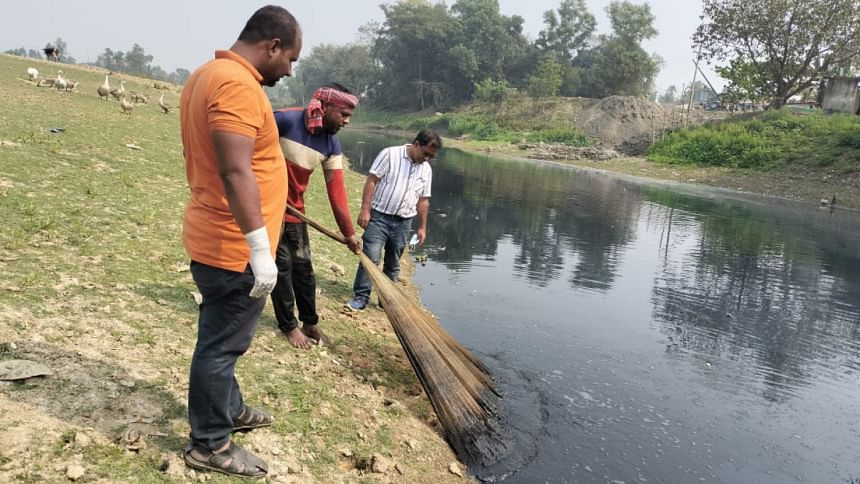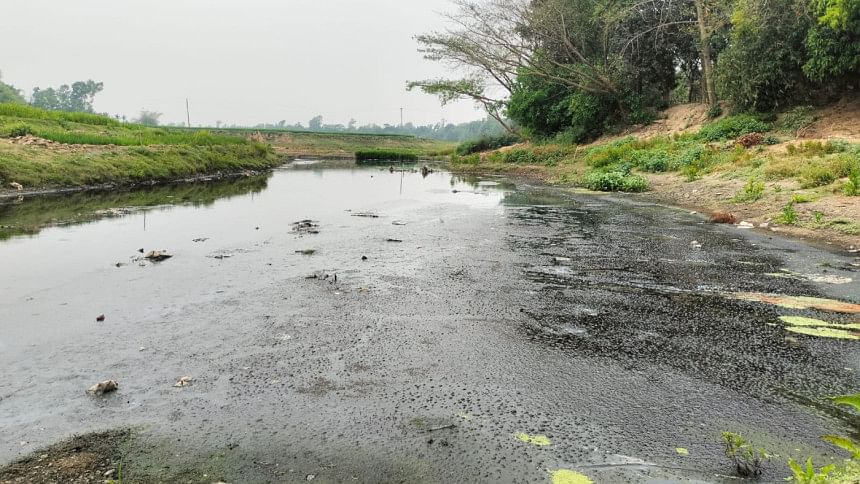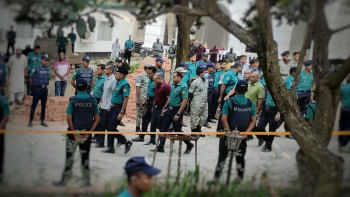Sutang river: Once a lifeline, now a toxic stream

Once a lifeline for thousands, the Sutang river is now on the deathbed.
Once teeming with fish and other aquatic life, this vital waterway in Habiganj has turned into a toxic stream due to industrial waste.
According to sources, 35 to 40 factories along the riverbank -- producing plastics, food and beverages, textiles, stationery, and ceramics -- discharge untreated industrial waste into the river, contaminating its waters.

Experts say that due to the pollution, oxygen levels in most parts of the river have dropped to the point where aquatic life can no longer survive.
Tofazzal Sohel, general secretary of Bangladesh Poribesh Andolon (BAPA), Habiganj, said the river is now devoid of fish.

"On February 22, we cast nets at 12 locations and found almost no aquatic life. The only catch was a few small fish, including a dead one. In several other locations, nets retrieved only garbage, with no signs of live fish, frogs, or even snails and oysters," he said.
The pollution has affected local livelihoods. Fishermen who once depended on the river for chital fish have lost their source of income.
Mahbubul Mia, a fisherman from Sutang village, along with several others, said, "For generations, we made a living from fishing, but those days are gone. I have now switched to driving a rickshaw because the river is dead now."
He blamed the lack of oversight from the relevant authorities and public representatives for the current state of the river.
"The Sutang's water is now black and murky, emitting a strong stench. Not only have fish disappeared from the polluted river, but other aquatic life is also dying," he added.
Joytara Bibi, a farmer from Nurpur village, said she no longer uses the river.
"Due to pollution, the water is unsafe for people, animals, and birds," she said.
Ranjit Paul, a potter from Pal Bari, said the soil has even become unusable for his crafts.
Local trader Subash Das said the stench from the river persists even with doors and windows closed.
He noted that pollution has also disrupted an annual religious event where devotees gathered for a holy bath in the Lakhai section of the river.
"With the water so polluted, it's become impossible to carry on this tradition," he added.
A research team from Habiganj Agricultural University is conducting a study of the river's water quality and aquatic life.
Iftekhar Ahmed Fagun, a lecturer from the Department of Aquatic Resource Management at the university, said laboratory tests have confirmed the presence of microplastics in water and fish samples.
Industrial waste has severely affected the river's physicochemical properties, making it uninhabitable for aquatic organisms.
Preliminary findings show critically low dissolved oxygen (DO) levels, high electrical conductivity, and total dissolved solids (TDS) beyond the optimal range for freshwater ecosystems.
No fish or aquatic organisms were found near the Shailjora canal, where industrial waste enters the river.
Md Shakir Ahammed, a lecturer in the Department of Environmental Science and project lead, said further tests are being conducted to determine the presence of heavy metals.
He emphasised the need for stricter regulations on industrial waste disposal to prevent further ecological damage.
Md Ferdous Anwar, director of Department of Environment of Sylhet, told this correspondent that his office had sent an action plan with 8/9 recommendations to headquarters regarding the river.
"If the plan is approved, the river can be saved. We are taking measures to monitor the industries 24 hours," he added.
The Sutang River, a transboundary waterway between Bangladesh and India, spans 82 kilometers and has an average width of 36 meters.
It originates in Tripura, India, and enters Bangladesh through Chunarughat upazila in Habiganj before merging with the Kalni River in Lakhai upazila.

 For all latest news, follow The Daily Star's Google News channel.
For all latest news, follow The Daily Star's Google News channel. 



Comments